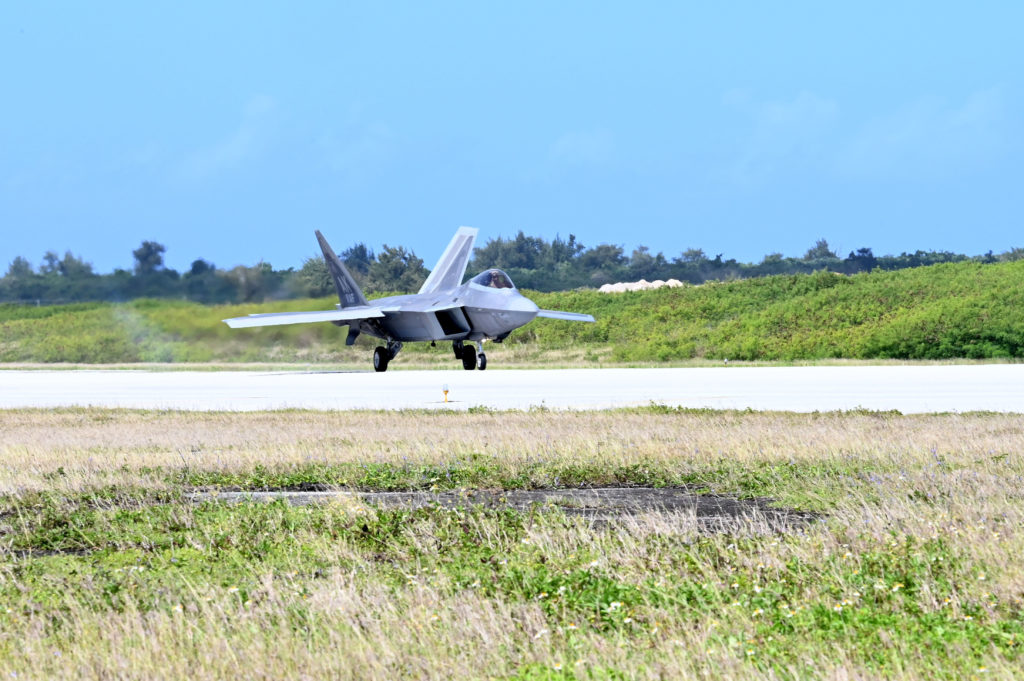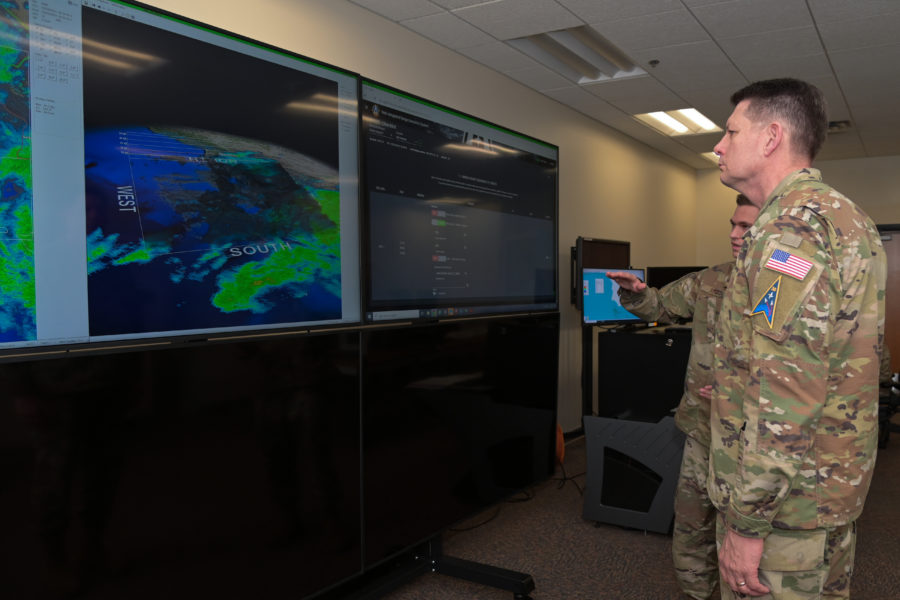Transformative advances in computing, far greater emphasis on information warfare, and increasingly scarce sanctuaries from adversaries’ reach are among the factors that will shape air warfare in 2040, according to a new report from the Air Force’s futurists.
The Global Futures Report released April 12 by Air Force Futures defines four very different potential states of the world in 2040, each shaped by different trajectories applied to data and other emerging trends.
Lt. Gen. S. Clinton Hinote, director of Air Force Futures, and his co-authors say the scenarios do not aim to precisely predict the future, but rather to offer foresight to decision-makers preparing for whatever future is actually in store. Compared and analyzed against each other, they also offer takeaways on the trends leaders must watch in the years to come.
“Hubris warns that no entity can create the exact future it wants,” the report states. “However, organizations have a duty to discover opportunities and take advantage of them, make unforeseen disasters foreseeable and avoid them, and work diligently and disruptively to shape the future to their advantage. For the USAF and the DOD, the risk of a narrow vision and inaction is simply too high.”
Four Futures
The four scenarios envisioned are based on the Four Future Archetypes, a methodology developed by the Hawaii Research Center for Future Studies that defines four general paths the future might follow.
“A trend can either continue on its current trajectory (Continued Growth), encounter significant limits (Constrained), form a discontinuity to leap to a different market and growth curve (Transformational), or fail to adapt or become the cause of change (Collapse),” explain the report’s authors.
Applying those trajectories to identifiable trends, Air Force Futures examined the joint force’s core functions— Fires, Protection, Movement and Maneuver, Information, Intelligence, Command and Control (C2), and Sustainment. Unsurprisingly, the future trajectories vary wildly.
In a future of continued growth, great power competition between the U.S. and China continues, with more proxy wars enabling both sides to develop and test new technologies, such as hypersonic weapons, biological and chemical weapons, and even gene-editing to improve troops’ performance. Artificial intelligence and automation continue to progress, but ethical and political considerations limit the U.S. military’s use of it. More and better sensors, long-range fires, and kill webs force planners to abandon the concept of “sanctuaries” and focus on dispersing assets and troops. Supply chains remain vulnerable and interconnected.
In a “constrained” situation, biological and natural disasters have limited resources, and widespread anti-access/area denial systems have made it even harder for militaries to maneuver. Exquisite long-range fires mean the Air Force and other services have to disperse their assets to smaller, hardened bases, even within the U.S. The advanced weaponry also causes a stalemate between Great Powers, leading to more “gray zone” activities that fall short of open conflict, such as information warfare and the hacking of key infrastructure. However, due to polarization, limited resources for the military, and a focus on developing advanced weapons, the U.S. is ill-prepared to pivot to deterring and defending against gray zone activities.
In the “transformational” future, countries gain the ability to strike targets from space near-instantaneously, thanks to advancements in areas like directed energy. There are no “sanctuaries,” and countries also develop new weapons of mass destruction based on new biological and chemical breakthroughs. Artificial intelligence and quantum computing have advanced such that humans are out of the loop, and the speed of cyber is so fast that commanders are unable to change a course of action midway. The Air Force has consolidated its forces into small, hardened bases and increasingly relies on high-speed vertical takeoff and landing platforms enabled by advancements in energy technology.
In a “collapse” scenario, the effects of climate change threaten military bases and disrupt ground stations that control satellites, causing a collision in low-Earth orbit that creates massive clouds of debris and limits access to space. Technological advancements are proliferated throughout the world, giving smaller states and non-state actors outsized influence and capabilities. The U.S. is roiled by internal political and social division and steps back from the NATO alliance as isolationism builds, leading the Air Force and other military services to shrink with lower investment. Information warfare becomes increasingly crucial as communications degrade but technology advances, giving individuals the ability to manipulate the system.

Takeaways
Air Force Futures acknowledged that “readers should maintain healthy skepticism about each trend’s direction and velocity. … None of the trends are inevitable and few will occur in the manner laid out in this report.”
However, the authors noted six broad takeaways:
- Transformational Computing. In every scenario, artificial intelligence, machine learning, autonomous systems and quantum computing were crucial factors.
- The Myth of Sanctuary. Advances in sensors and weapons systems—especially without effective countermeasures—will likely make sanctuaries a myth, even within the U.S.
- Cognitive Soft Targets. Information warfare leveraging artificial intelligence, neuroscience, and intelligence operations, will expand and become more effective.
- Force Multipliers. Unforeseen developments will have cascading effects, creating potential force multipliers in areas that could include “AI/ML, Quantum Computing, Directed Energy, Energy Webs, Sensor Ubiquity, and Space Operations.”
- Economic Interconnectedness. If global economy interdependence declines, the future world will be much different. What happens “defines the next 20 years,” the authors said, presenting vulnerabilities in the supply chain, breakdowns in trade, and declining intellectual collaboration.
- Life Science Collapse. Between climate change, limited resources, nuclear weapons, chemical and biological warfare, and gene editing technologies, potentially dramatic changes could impact the fundamentals of life as we know it.
Such takeaways are intended to be a starting point for more analysis and discussion, the authors say.
“The report will be used to inform planners, strategists, and wargame scenarios positioning Airmen to anticipate, prepare, and operate in the future,” according to an Air Force release.
